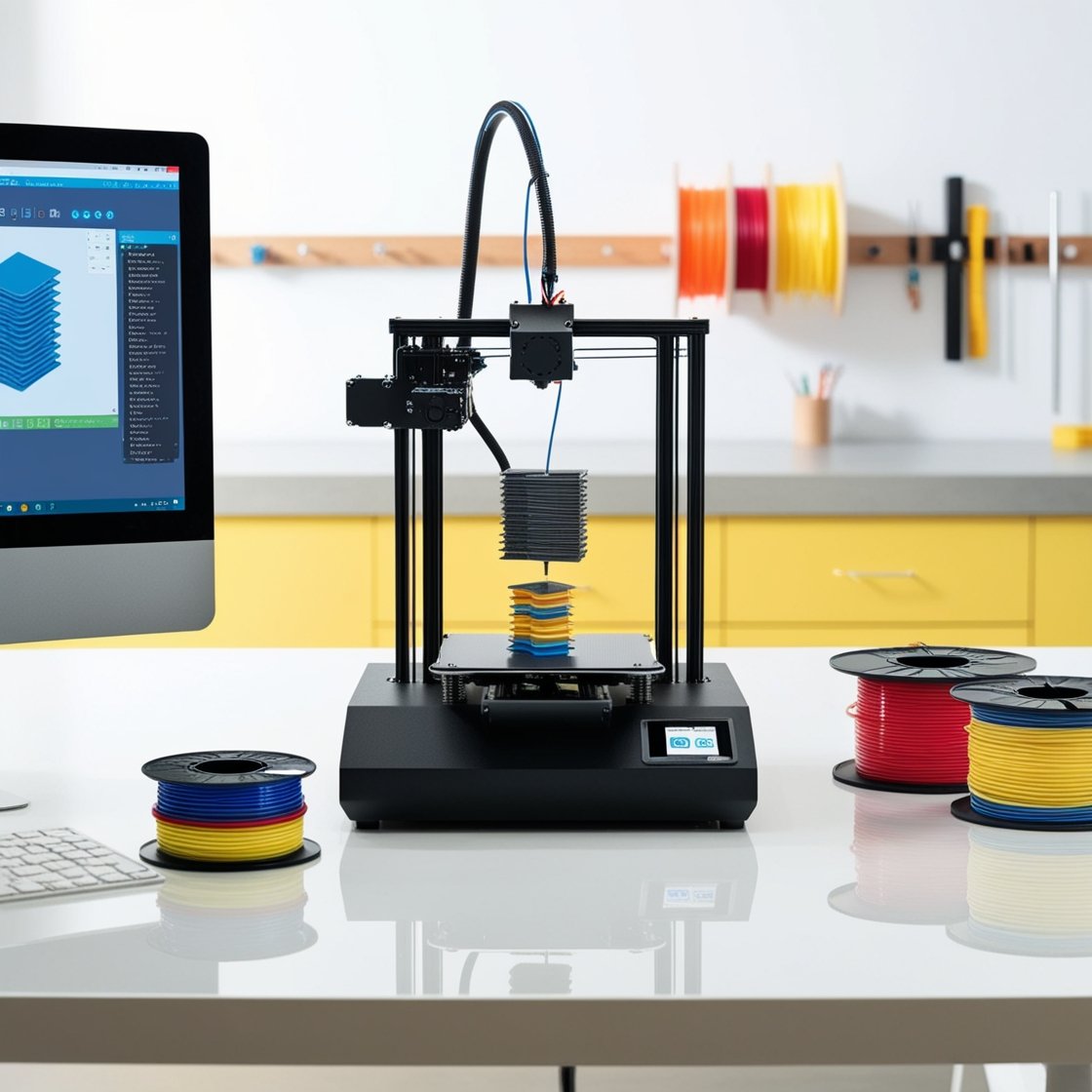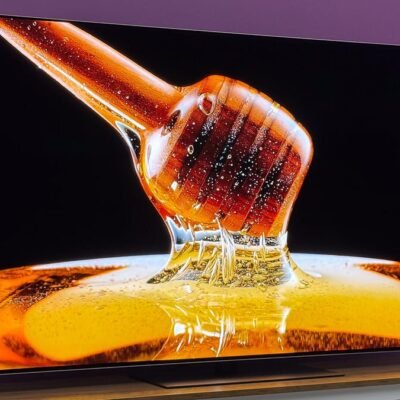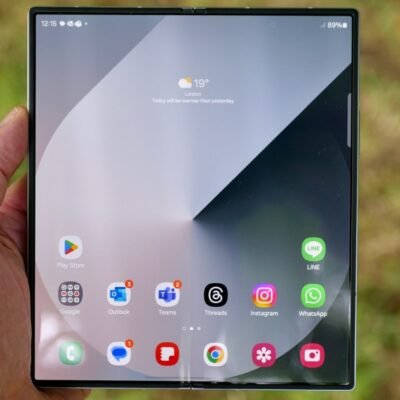Over the past ten years, 3D printing has advanced quickly, creating countless opportunities for both professionals and enthusiasts in the field. 3D printing can help you realize your ideas for functional components, prototypes, and custom objects. This guide will take you through the basics of 3D printing and help you get started with your first print.
1. Understanding 3D Printing
3D printing, also known as additive manufacturing, is the process of creating a three-dimensional object by building it layer by layer from a digital model. Unlike traditional manufacturing, which often involves subtracting material from a solid block (like carving or machining), 3D printing adds material in precise locations to form a physical object.
Types of 3D Printing:
Fused Deposition Modeling (FDM): The most popular and accessible type, commonly used by hobbyists. It involves melting thermoplastic filaments and extruding them layer by layer.
Stereolithography (SLA): This method uses a laser to cure liquid resin into a solid form.
Selective Laser Sintering (SLS): A laser sinters powdered material, fusing it into a solid structure.
For beginners, FDM is the most affordable and user-friendly method, which is why we will focus on it in this guide.
2. Setting Up Your 3D Printer
If you’ve recently purchased your first 3D printer, congratulations! The first step is setting up the machine for use.
a. Unboxing and Assembling
Follow the instructions that come with your 3D printer carefully. Most beginner-level printers come partially assembled, but you may need to attach a few components like the print head and bed.
Ensure that all the parts, screws, and tools are accounted for and in place.
b. Calibration:
Proper calibration ensures that your printer creates accurate, high-quality prints.
Level the bed: Most 3D printers have a bed where the print is created. Make sure it is perfectly level to avoid misprints.
Set the nozzle height: The distance between the print nozzle and the bed must be calibrated. A common method is to place a piece of paper under the nozzle and adjust it until the paper has a slight resistance when pulled.
c. Installing Software:
You will need 3D printing software (slicer software) to prepare your digital models for printing.
Popular slicers include Cura (free), PrusaSlicer (free), and Simplify3D (paid).
Connect the printer to your computer: After installing the software, connect your 3D printer via USB or Wi-Fi (depending on the model) and ensure it communicates with your slicer.
3. Choosing a 3D Model
You can create your 3D model using CAD (computer-aided design) software or download ready-made models from online repositories.
a. CAD Software Options:
TinkerCAD (Beginner-friendly): Free, browser-based CAD tool with drag-and-drop functionality.
Fusion 360 (Intermediate): A powerful tool for more complex designs, free for students and hobbyists.
Blender (Advanced):** Free, open-source software for more intricate designs and animations.
b. Online Model Repositories:
For beginners, downloading an existing model is a great way to start.
Thingiverse: One of the largest collections of free 3D models.
MyMiniFactory Offers high-quality, curated 3D designs.
Cults3D: A popular marketplace for paid and free 3D models.
4. Slicing the Model
Slicing transforms your 3D model into instructions that your 3D printer can understand. The slicer software breaks the model into thin layers and generates G-code, which tells the printer how to create each layer.
Steps to Slice Your Model:
1. Import the model: Load the STL file (the common format for 3D models) into your slicer software.
2. Adjust settings:
Layer height: Lower layer heights (0.1 mm) produce finer details but take longer to print, while higher layer heights (0.2 mm or 0.3 mm) print faster with less detail.
Infill percentage: Controls how solid the print is. For decorative models, 10-20% is often sufficient, while functional parts may require 50% or more.
Print speed: Beginners should stick with the default speed (around 50-60mm/s) to avoid issues.
3. Preview the G-code: Most slicers offer a preview mode, allowing you to visualize each layer to ensure no issues.
4. Export the G-code: Save the G-code file to an SD card or send it directly to the printer if connected via USB.
5. Starting the Print
Once the slicing is done and your printer is calibrated, it’s time to start printing!
a. Load the Filament:
Choose the right filament type: PLA (Polylactic Acid) is the most beginner-friendly filament due to its ease of use, minimal temperature requirements, and eco-friendliness.
Load it into the extruder: Follow the printer’s instructions to insert the filament into the extruder. Once the nozzle is heated, the filament will begin to melt and extrude through the nozzle.
b. Start Printing:
Insert the SD card (if applicable) into your printer, select your G-code file from the printer’s menu, and press “Print.”
Watch the first layer closely to ensure the print sticks to the bed properly. If not, stop the print, recalibrate, and try again.
6. Post-Processing Your Print
After your print is finished, there are a few steps to finalize the product.
a. Removing the Print:
Let the bed cool down before removing the print to avoid warping or damaging it.
Use a spatula or similar tool to gently lift the print from the bed.
b. Cleaning and Sanding:
Support material removal: If your model used supports (extra structures to hold overhanging parts), carefully remove them with pliers.
Sanding: For a smoother finish, you can sand the surface of your print with fine-grit sandpaper.
c. Painting and Coating:
If you want to add color, you can paint your model using acrylic or spray paint. Some prints also benefit from a protective coat of clear spray lacquer.
7. Troubleshooting Common Issues
No 3D print is perfect, especially at the beginning. Here are some common problems and their solutions:
Poor bed adhesion: Ensure the bed is clean and properly leveled, and use adhesive sprays or tapes if needed.
Stringing or blobs: Adjust the retraction settings in your slicer to prevent the filament from oozing between moves.
Layer shifting: Make sure the belts and pulleys of your printer are properly tensioned and the bed is firmly secured.
8. Conclusion
3D printing can initially appear overwhelming, but with the right preparation and understanding, you’ll build incredible objects with ease. Start with small, simple projects and gradually work up to more complex designs. Each print is an opportunity to learn and improve your skills. Once you’ve mastered the basics, the only limit is your imagination.
Happy printing!





